
Never more prevalent than today “What You Don’t See Can Hurt You” This message is a continuance from the first post which focused on the food industries rational for employing and integrading food additives. The following is a list of food additives that were given a green light by the FDA since the late fifties and the foods most commonly and abundantly found in. The list of items includes many side effects and health risks. You will also note the steps taken by certain countries while others continue to put the public at risk.
Common Food Additives To Avoid
Aspartame
Possible Effects – 90 or more side effects determined
Symptoms of Multiple Sclerosis are currently strongly associated with this chemical sweetener. Physical weakness, several eye and ear conditions, neurological issues, psychological problems like depression and anxiety, skin and allergies, high blood pressure and palpitations, gastrointestinal problems and endocrine and metabolic concerns and other
Common Sources
Diet and sugar-free soft drinks, fruit drinks, chewing gum, medications, supplements, candy and instant desserts like Jell-O and puddings
Brominated Vegetable Oil (BVO)
Possible Effects
BVO has been banned in the UK, Europe and Japan but not in North America. BVO is 15 (ppm) in coca cola BVO. Accumulates in the fatty tissue: headaches, coordination problems and speech, fatigue, memory loss and poor balance. Higher risk associated with bromate another ingredient; a poison, especially for children.
Common Sources
Soft drinks
BHA and BHT (Preservative)
Possible Effects
European Union has prohibited BHA in fragrances and cosmetics. California has only added a warning. Carcinogen to humans (2), interferes with hormone function, raised cholesterol levels, promotes liver and kidney damage, infertility and sterility risks, immune disorders, psychological and behavioral problems
Common Sources
Cosmetics including lipstick and fragrances; chewing gum, preserved meat, beer, candy, breakfast cereal, shortening, sausage, desserts, packaged goods, dry beverages, wax food packaging and petroleum products including rubber
Citrus Red Dye #2
Possible Effects
Cancer in animals, hyperactivity, allergy type reactions, Bronchoconstriction and chromosomal damage
Common Sources
Skins of Orange peels and marmalade
The amount of Red dye 2 is considered very low in food and not to be harmful by some authorities.
Monosodium Glutamate (MSG) Unsafe Version
Possible Effects
Allergic reactions such as the throat tightening and hard to breathe, headaches, eye inflammation, brain edema, central nervous and vascular system problems.
Common Sources
Chinese food, salt substitutes, soups, condiments, seasonings
Caution: Since 2009, wheat derived MSG has been found in products imported from
Asia. R5 ELISA testing is needed to confirm its suitability in the gluten free diet.
Monosodium Glutamate (MSG) Safe Version
Today MSG is being produced almost entirely from sugar beet molasses in a highly purified form. Because of this change in manufacturing, authorities agree that it is now harmless and safe for Celiac disease; being gluten free.
Nitrites and Nitrites
Possible Effects
Headaches, cancer, flushing and tachycardia both of which can worsen angina by increasing oxygen demand, birth defects, childhood leukemia and Blue Baby Syndrome which can be fatal in some cases. Nitrate salts and Nitrite salts convert to nitrites salts in the body which can react with other nitrogen compounds called Nitrosamines. Nitrosamines are carcinogens.
* FDA allows 2.75 ounces of nitrates to be added to 100 pounds of chopped meat.
Common Sources
Bacon, ham, sausages, smoked meats, luncheon meats and cured meats. Nitrites are also called Saltpeter, a main ingredient in gun powder and explosives and chemical fertilizers.
Saccharin
Possible Effects
Higher risk for reactional effects concern infants, children and pregnant women for producing an allergic response; chemical class sulfonamides symptom reactions include headaches, difficulty breathing, skin problems and diarrhea. The FDA removed the Bladder cancer risk from their list in 2001.
Common Sources
Chewing gum, canned fruit, toothpaste, baked goods, jams, beverages and medications
Sulfur Dioxide, Bisulfite and Sulfites
Possible Effects
Allergic reactions from mild to severe such as hives onto breathing difficulties. Potential for fatal anaphylactic shock. Asthma attacks may increase (Clinical and Experimental Allergy in November 2009). Sulfites ratio 10 parts per million must include a warning. Reactions include low blood pressure stomach pain, diarrhea and flushing skin.
Common Sources
Dried fruit, shrimp, pre cut frozen potatoes, wine, tea, juice, beer, hard cider, molasses, gravy, condiments, dried soup mix, jam, baked goods, sugar-free sweeteners, soft drinks
*Routinely applied as a preservative to restaurant salad bar items and grocery store produce.
Tertiary Butydroquinone (TBHG)
Possible Effects
Affects estrogen in women, hyperactivity in children and behavioral problems, nausea, delirium, tinnitus, vomiting, collapse and restlessness.
Common Sources
Crackers and crisps, candy bars, fast food, some pet foods, baby skin care, baking sprays and cosmetics. Also, varnish, lacquer and resins. TBHG has been considered to be a form of Butane, however that statement may not be completely accurate, even so, it does not necessarily mean that TBHG healthy.
Yellow Dye #6
Possible Effects
The Center for Science in the Public Interest (CSPI) in 2008 went to Great Britain to check out a report released by the Food Standards Agency showing links between certain food colorings and hyperactivity in children. Government oversights determined concern about foods declaring their food parts and color to be from natural sources and not from dyes. For example, McDonald’s Strawberry Sundaes from the United States gets it color from Red dye 40 and Fanta orange soda coloring from Red dye 40 and Yellow dye 6. The same products in the UK are from strawberries and from pumpkins and carrots.
Yellow food dye #6 is a synthetic chemical and the sulfonated version of Sudan I, is a possible carcinogen. Exclusively, Sunset Yellow may be responsible for allergic reactions resulting in symptom such as vomiting, migraines, gastric upset, diarrhea, nettle rash (urticaria) and swelling of the skin (angioe sulfonated dema). Yellow dye 6 is also linked to hyperactivity in young children and ADHD, kidney and adrenal injury, chromosomal impairment and allergic reactions
Common Sources
Candy, soft drinks, macaroni, fruit punch, and foods that orange flavored
Acacia Gum (Gum Arabic)
Possible Effects
Toxicology: Acacia is essentially nontoxic when ingested.
* Of all the food additives in this document, Acacia gum was found to be highly beneficial when used in its whole state. There is more than one type and more than one level of quality. Acacia gum has been used topically for healing wounds. And in the early stages of plaque build-up, acacia gum has shown to inhibit the growth of periodontic bacteria.
Adverse reactions depending on the various forms may include asthma attacks, skin rashes, increasing cholesterol, allergic reactions and respiratory, pregnancy and fetal development problems.
* Information regarding safety and efficacy in pregnancy and lactation is lacking.
Common Sources
Chewing gum, candies, frosting, soft drinks and related beverages
Gum acacia is commonly used to modify the physical properties of foods. Acacia gum is used as a demulcent in pharmaceuticals.
Alginic Acid
Possible Effects
Alginic acid, algin or alginate, is a polysaccharide found in abundance in the cell walls of brown algae.
Pregnancy complications, birth defects
*E400 – Alginic acid: No known adverse effects in small quantities. Large quantities can inhibit the absorption of some nutrients
Common Sources
Ice cream and other frozen desserts, salad dressings, cheese spreads and dips, custard mix, yogurt, flavored milk, ice blocks, and thickened cream.
* Alginic Acid is a type of bulking agent, thickener, emulsifier agent performing certain functions when added to food and used in cooking. Other uses include, foaming agent, gelling agent, glazing agent, humectant (helps prevent food from drying out) and sequestrant (controls the availability of a cation)
Benzoic Acid
Possible Effects
Asthma attacks, rashes, irritation of eyes and mucous membranes, behavioral problems and hyperactivity in children. Products that contain both vitamin C and Sodium benzoate form Benzene. The substance Benzene is a carcinogen and documented to contribute to the formation of many different types of cancer.
Common Sources
Margarine, beer, pickled vegetables, soft drinks, jelly, jams, fruit juice, mincemeat, barbecue sauce, sauces, fruit juices, pickles, vinegar, and salad dressings. Sodium benzoate is heavily used by the soft drink industry. Listed as a food additive you will locate sodium benzoate on the product can listed as E211, which is the number assigned to it as a food additive.
Propyl Gallate
Possible Effects
While most artificial food additives may promote concern, there are some food additives that double as an antioxidant. Propyl gallate happens to be one such substance. It is widely used amongst food products, bath and cosmetics and pharmaceuticals. The warnings are reflected more towards people who were poor in health such as those who have asthma, an allergy to aspirin, who may have liver or kidney problems – these people should avoid propyl gallate as much as possible. Adverse side effects were generally shown among human’s not animal trials to be asthma attacks, allergic reactions, liver and kidney damage and gastric irritation. Propyl gallate prevents oxidation which keeps fats and oils from going rancid or deteriorating.
Common Sources
Breakfast cereals, vegetable oil and shortening, mayonnaise, meat, soup, dried milk, candy, chewing gum, frozen dairy products, spices, vitamins, snack food, pet food, sunscreen and personal care items.
I suggest you go beyond this list if you have any health care issue that is ongoing or worsening. And especially if there are children who may be ingesting large amounts of dyes and chemical additives in their unhealthy cereals, fast food and junk food. Concern surrounds any motor skills, behavioral and developmental problems, respiratory and neurological issues.
Correlating Post:
Unsafe Food Additives (1 of 1)
Copyright © 2016 – All Rights Reserved – Michelle Honda Ph.D.
Announcement
Look for my new forthcoming books “Reverse Heart Disease Naturally” (Jan.31, 2017) and “Reverse Inflammation Naturally” (May 31, 2017) and “Reverse Thyroid Diseases Naturally” (Fall 2017)
Disclaimer
While close attention was given to the accuracy of information in this article, the author accepts neither responsibility nor liability to any person with respect to injury, damage, loss or any circumstances involving alleged causes directly or indirectly related to the information in this article. The sole purpose is to educate and broaden ones awareness. This information is not meant to replace medical advice or services provided by a health care professional.





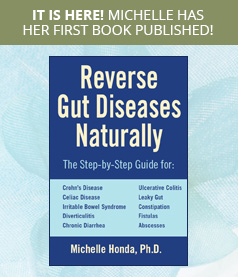

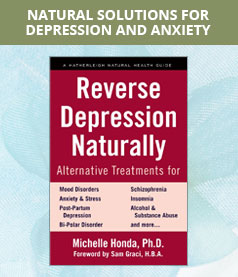
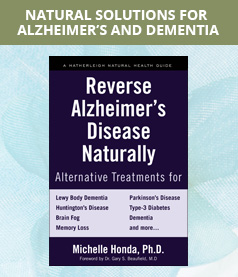
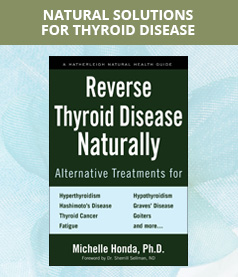

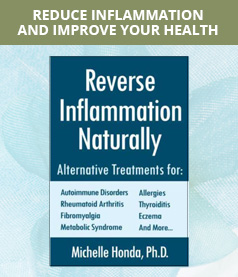
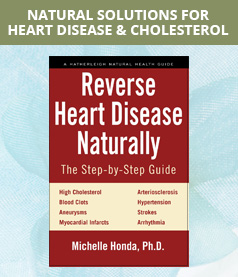
Follow Us!